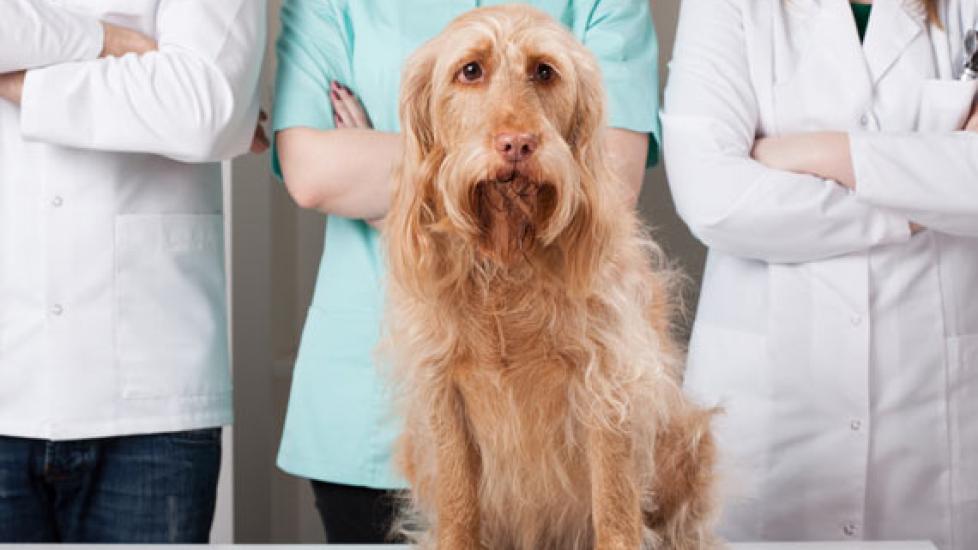What Does it Mean When Your Doctor Makes 'Rounds'?
Medicine is full of peculiar terminology; the language spoken by doctors is unfamiliar to non-medically trained individuals. Even those of us entrenched in the healthcare field become bogged down by confusing acronyms, four and five syllable words, and bizarre pronunciations.
Earlier this week I found myself contemplating an example of “curious medical lingo”. While standing in my everyday position in the ICU amongst my peers, listening to the emergency doctor discuss details about each of the hospitalized patients, I suddenly questioned, “Why do doctors call this process we are participating in ‘rounds’?”
Doctors participate in a variety of rounds on a routine basis, including bedside (“cageside” for veterinarians) rounds such as those listed above, morbidity and mortality rounds, grand rounds, teaching rounds, journal club rounds, tumor board rounds, and research rounds.
You may have called your veterinarian to ask a quick question and been told; “The doctor can’t speak with you now. She’s in rounds.”
If you're a fan of medical drama television shows, you’ve probably heard one of the main characters barking out the order; “We’re rounding in five minutes!”
Rounds can be lengthy or terse, boring or captivating, have an audience of one or thousands. But the word “rounds” doesn’t seem to have anything to do with what truly transpires during these happenings.
Rounds do not typically occur in the actual shape of a circle. While “rounding,” no one is generally contorting themselves into orb-shaped structures. And when we are in rounds we are not entertaining ourselves with a myriad of curved spheres.
So where did the expression “rounds” arise, as it relates to medicine?
Legend tells us the term was first coined in 1889 in the hallowed hallways of the medical school of Johns Hopkins University. Sir William Osler, a preeminent clinician and teacher who was also the first Professor of Medicine and Physician-in-Chief at Hopkins, is credited with introducing the concept of rounds to his students.
Prior to Osler’s tenure, the typical medical school curriculum consisted primarily of only instructive courses. Students merely observed senior physicians, who themselves were tasked with performing all examinations, diagnostic tests, and therapeutic procedures on patients. Time spent with actual “hands-on” learning was minimal to none.
Osler’s philosophy towards medical school education contradicted the established status quo. He insisted students could only accurately learn the art of human interrogation and examination by being the ones who actually spoke with and examined the patients themselves.
Osler told his students, "Listen to your patient, he is telling you the diagnosis," emphasizing the importance of obtaining a thorough history as it relates to diagnostic acumen. Osler’s words were powerfully echoed over 110 years later by my favorite veterinary school professor, who taught me that “90% of the diagnoses you will make will be achieved based on your ability to talk to an owner and perform a comprehensive physical exam.”
The contribution to medical education Osler was proudest of was his creation of clinical clerkships. Here, the third and fourth year students worked directly alongside him in the hospital, simultaneously examining admitted patients in small groups.
The hallways of the medical school at Johns Hopkins were circular shaped. So while doctors-in-training were participating in Osler’s daily didactic endeavors, they needed to physically walk along the circumference of the circle in order to stop at each patient’s bed and perform their evaluations. Hence, the birth of the term “rounds” as it relates to medicine.
Rounds are an excellent way for doctors to disseminate knowledge to one another. However, inherent to the verbal flow of information is a considerable flaw, which is most pronounced during shift changes among attending doctors who are caring for the same patient.
Whenever one doctor rounds with the doctor taking over the care of that patient, there is as equal an opportunity for teaching and learning as there is the chance for information to be relayed incorrectly or lost in the shuffle.
The good news is that mistakes are rare. The bad news is that mistakes, though rare, can be quite impacting for patient care. All it takes is omitting a key lab report finding, inaccurately recalling a patient’s vital signs, or forgetting to relay that an owner is expecting a call that evening with an update to create a severe complication. Rounds are the ultimate test of communication skill and thoroughness for most doctors.
Though the shapes of the ICU where patients are kept vary, and the layouts of our lecture halls and tables that we sit at for our meetings change, the fundamental philosophies of medical rounds vary little from institution to institution.
Rounds are an integral part of my day and beyond. Rounds are how I disseminate information to my fellow doctors, technicians, and house officers. And rounds are a constant reminder that I must be completely up to date on not only my own patients but also all of those in the hospital where I work, in order to provide the highest quality of care.
And after writing this article I know a little more about a pretty interesting guy named Dr. Osler, who not only impacted human medicine but, obviously, veterinary medicine as well.
He’s someone I’d love to have had the chance to round with myself.

Dr. Joanne Intile
Image: Photographee.eu / Shutterstock
